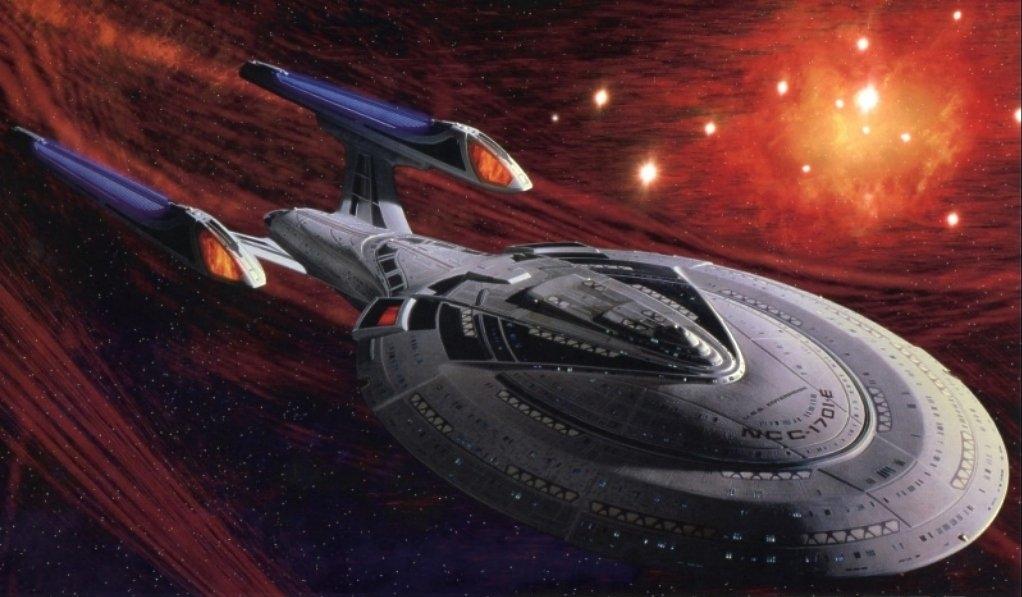For the first time in the world, European scientists have successfully fabricated "antimatter". This is an astounding physical breakthrough, making Hollywood's movie "Angels and Demons" possible no longer a fantasy.

In the fictional movie Star Trek, an antimatter reactor provided energy to operate the Enterprise spacecraft. (Photo wikivisual.com)
Experts from the European Nuclear Research Center (CERN) in Geneva have announced that they have collected dozens of " antimatter " hydrogen atoms (possibly called anti-hydrogen) - a technical feat that enhances significant research on one of the most difficult puzzles of nuclear physics. According to the Telegraph , the process of acquiring " antimatter" only takes place in 1/6 seconds.
However, the 38 anti-hydrogen atoms gained hardly create any " threat to the Vatican " as the writers imagined. They also cannot operate a spaceship as depicted in the Star Trek fantasy movie.
Still, the experts praised this achievement as an important breakthrough, which could help physicists develop, more deeply aware of the nature and origin of the universe. " It can start experiments with the result of bringing significant changes to current perceptions of elementary particle physics or confirming what we know so far, " said Professor Rob Thompson - Head of the Department of Physics and Astronomy at the University of Calgary and also one of the leading scientists behind the project, said.
The concept of antiparticle, or antimatter first appeared in theory. According to a hypothesis theorized by prominent British theoretical physicist Paul Dirac in 1931, antimatter is a common matter that is reversed. When energy changes into matter, a particle and an antiparticle (reflection of the particle) are formed. Between particles and antiparticles there are conflicting characteristics; or opposite charge, or movement in opposite directions, etc.
Ordinary atoms consist of positively charged nuclei and negatively charged electrons circling around. In contrast, their antimatter will have a negative charge nucleus and the surrounding particles will carry a positive charge.
When particles and antiparticles collide, they destroy each other and release energy. Similarly, when matter (including particles) and antimatter (including antiparticles) meet, they immediately kill each other and create an explosion of energy. For this reason, antimatter has long been an attractive and spooky element in science fiction.
Theoretically, only 0.5kg of antimatter also contains stronger destructive power than a biggest gas bomb. However, the fabrication and storage of even a very small amount of antimatter is costly and difficult to the extent that the prospect of using them to create an ultimate destructive weapon is still far away.
Professor Thompson revealed, 38 antimatter atoms that scientists have just succeeded in not even heating a cup of coffee.
Professor Mike Charlton , a member of the research team at Swansea University (UK), adds: Hydrogen is the simplest form of atomic and anti-hydrogen is the easiest form of antimatter that can be made in a laboratory. Hopefully, understanding it will allow us to clarify why almost everything in the universe has been known to include matter primarily, and the amount of antimatter is very small.
Scientists believe that, when the universe was born nearly 14 billion years ago from the Big Bang, an equal amount of matter and antipathy were born. Even so, the universe today is completely under the dominance of ordinary matter. This is also good, because otherwise, the universe will be a very dangerous place to live. But it raises a question that has long been a headache for the scientific world: Where did all the antimatter formed from the Big Bang go?
 Vietnam 5th Asian champion on fuel-efficient vehicles
Vietnam 5th Asian champion on fuel-efficient vehicles We can read all NASA studies completely free of charge
We can read all NASA studies completely free of charge Singer and songwriter Bob Dylan won the 2016 Nobel Prize for Literature
Singer and songwriter Bob Dylan won the 2016 Nobel Prize for Literature Scientific revolution in Asia
Scientific revolution in Asia